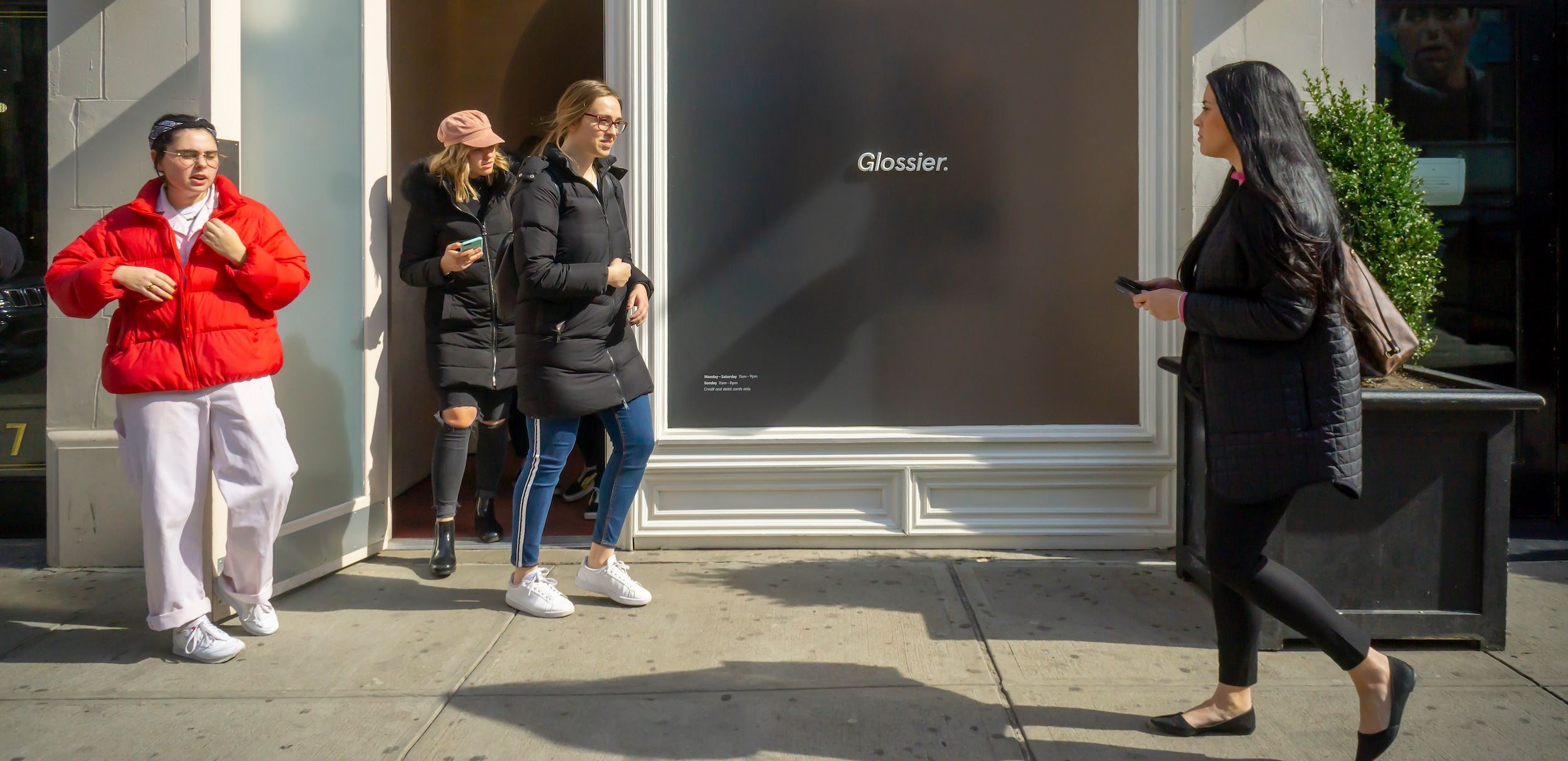
Stay Informed
Get the latest news, trends, and industry insights.
Do you ever think of how many brands you follow online? Which ones you do and why? We all have our favorites. But why do we follow them? Is it to feel a connection with what they stand for? To be a part of their conversation? To be a part of their tribe? To feel… wanted?
Many consumers — either knowingly or unknowingly — expect businesses today to help establish (and re-establish) real human-to-human connection in an authentic and meaningful way. Brands today aren’t just putting a social benefit on buying their product, but increasingly offering more ways to connect to their brand emotionally, and ultimately, to one another. While today's world is dominated by the noise and solitude of social media, brands are able to puncture this veil and speak directly to consumers. So how do businesses today cut through the chaff, and enter the real conversation with today's consumer and build meaningful human-to-human connections?
Businesses today have the power to connect people in amazing, meaningful, authentic ways — across multiple lines — be it gender, age, demographic or socioeconomic — ways in which no business could have ever imagined in previous decades. The tools to reach consumers instantly and across all these segments are so prevalent and now, literally in the palm of hands, that it’s just as easy for a start-up bracelet company to get the same attention on Instagram as Patagonia or Adidas.
But what’s more than that is in this crowded world of social media, when all these brands have the ability to be presented somewhat equally, how do they cut through the noise?
Turns out customers are craving this connection. In a recent Sprout Social survey of over 1000 people, 91% of all respondents believe that social media can connect people, with 78% wanting brands themselves to use social to bring them together.
Today we’ll look at three different business approaches in which this is manifesting and also what questions businesses can ask themselves who want to connect authentically.
How do we create meaningful brand connections? They come into play when a brand can create a link between its promise and product (what it does) with what people are seeking on a deep human level (what we need).
On a very human level, as Tracy Lloyd of Emotive Brands tells us, we’re all looking for the following:
- To feel safe and secure in our surroundings, our social situation, and in our hearts
- To feel connected to the people, ideas, and ideals that we care about, and which nurture us
- To feel we are growing physically, mentally, emotionally, and spiritually, through our thoughts, actions, and possessions
Looking out to our audience of current and potential customers through this lens is enlightening. It helps us understand meaning and connection, through our brand’s touchpoints. And through that, we can connect with people’s deep roots of attitudes, beliefs, and behaviors.
This connection not only is incumbent today for brands to remain relevant and thriving, but it’s becoming clear that consumers want then these trusted businesses to connect people meaningfully. In fact, in the same survey, 62% believed that social media can unify people of different backgrounds and beliefs, with over half of the respondents expressing interest in connecting with people different from them.
In today’s political climate, that almost seems absurd, but it’s telling that that’s how we’re feeling as a society.
According to Wall Street tech analyst and venture capitalist Mary Meeker’s latest internet trends report, more than half of all Twitter posts are getting traffic because they have associated images. Why does that matter? Images covey a very distinct emotional attribute — and we can imagine ourselves in that very situation. We are yearning for this connection now more than ever.
Patti Williams of Wharton Business School stated in an interview that:
“…The bar for what it means to be a brand that’s loved by your consumers has fundamentally changed. It’s not just about making a great product. It’s also not just about having a great image, that you’re doing good things and that you have a positive image more broadly in the world […] it’s about really aligning with a sense of deeply held values and a sense that you’re willing to take risks for those values as a marker of authenticity.”
There are a number of companies that do this for different brand purposes, and we’ll take a look at a few. All of these “purpose-driven businesses,” that is, they integrate purpose into their core business strategy have found relevant ways of connecting. Let’s see if we can unpack some of them:
Some brands are leading the way and one of the best examples is Zappos. Their 24/7/365 customer service — who famously will help you even order a pizza — has become the pinnacle of customer service. A quick read of the late Tony Hsieh’s book “Delivering Happiness” will show that their business model states that they do not consider themselves a retailer, but rather that they are a “customer service company, that happens to sell shoes.”
Their surprise and delight discretion ends up giving up to 80% of callers free expedited shipping. The agents have the leeway and ability to offer discounts, comp shipping, and add on products like other businesses, but are also encouraged to act with surprise and delight. That may include ordering a pair of out-of-stock wedding shoes from a competitor’s website for a crying soon-to-be-bride or sending her flowers on the day of her wedding.
And the rest of the staff? This not only trickles down to all employees who make it right with all customers who call in or email the company; but because they’re driven from their customer service mentality, every employee must start in customer service when they begin at the company, and also spend hours in the department each holiday season.
The technology helps, too. Their agents get connected to callers based on how close the agent’s own hometown or college was to the caller’s location, automatically sparking conversation around something familiar. This immediate connection generates a safe, genuine conversation that has a long-lasting impact on the individual. Couple that with an amazing returns policy and you have a winning brand moment that connects deeply with people.
And there are also brands that are “Doing good in the world.” The social benefit for consumers — which is often highly promoted, recognized, and applauded (especially by millennials who like brands to do more in the world than just satisfy their own needs, but help others) is that they can buy into a brand that believes what they do. This “they get me” feeling really connects with this group of customers who’d like to see transparency in the manufacturing, sourcing and supply chain and also feel like they’re doing good by buying these products.
This level of social consciousness can be seen in the likes of TOM’S and Warby Parker, where for every shoe or eyeglass frame sold, respectively, a product donation to those in need is matched. Catchy phrases aside (“One for One” is TOM’s and “Buy a Pair, Give a Pair” is Warby’s), these programs do good, but also help fuel the connection from the consumer to the brand, socially. If you’re concerned about the 2.5 million people globally who need glasses but can’t afford them, you’re more likely to shop at Warby Parker than Lenscrafters.
Bombas, the sock company popularized through TV’s Shark Tank has donated over 20 million pairs of socks to homeless shelters. Why? It’s the number one requested item from those who need to stay there. When you know that buying something for yourself contributes to others, you’re likely to purchase from them and feel a part of something bigger, giving us value as a person.
New retailers like United by Blue are following what early brand pioneers like Patagonia, CLIF Bar, and REI have started, by involving the climate. United by Blue is removing one pound of trash from the ocean and other waterways for every purchase made. They haven’t just removed over 2 million pounds of trash so far, but their community cleanups draw both customers and community members, allowing not only incorporation and acceptance into this new tribe but a feeling — a connection — with the brand and those who are like-minded.
Then there’s this idea of co-creation. Cosmetics company Glossier has harnessed this idea to connect with their consumers. By prioritizing “co-creation” with them, their “people-powered beauty ecosystem” has been one of the lynchpins of their monumental success and meteoric rise to the top of the beauty industry. Every single one of Glossier’s consumers (or even followers) has the ability to be an influencer of the brand, which instantly creates a personal connection that is not only envied by every other brand in their space but among all brands who merely take notice of this practice.
Take it a step further: You’re most likely to find a consumer of Glossier becoming an employee; so it makes sense that they are like-minded with their audience because many of them were their audience. According to their website, their “ecosystem survives and thrives on a symbiotic relationship with you, and her, and her, and him. This is a group effort.” They say it right there with a purpose: a relationship with you is what matters.
And it works. Lines outside Glossier stores in NYC, LA, and their numerous popular pop-ups nationally are blocks-long, Instagram-worthy spectacles. And the pay-off? An experience tailored to customers where limited groups are allowed in at a time to allow for maximum attention from staff. This attention is another way of connecting to their consumers. As one of the most disruptive brands in the beauty space, at only 5-years old, it has also become one of the most successful startups in recent years.
Consumers want to feel they not only have a personalized, individualized relationship with a brand but then with others who share similar beliefs as well.
To connect to consumers in meaningful ways, any business can learn how by doing these five things:
- Open Up Opportunity
Be open to consumers. Wherever and whenever they’re present. That means the website, stores, marketing, social media, customer service. Be available and open. Think of places and times when you’re least connected to your consumers. Then develop ways during that time. - Ask Open-ended Questions
When your customers are interacting with you, ask open-ended questions, not simply yes or no ones. Do this in-store, with your customer service team, while engaging your customers on social media, or even through online chat. Ask them how they intend to wear their outfit — not just merely if they like to go to parties. Or ask your teenage shopper what trick they like to do on their skateboard, not just if they ride. You’ll see your customers open-up and respond in meaningful ways. People like to talk about themselves, especially if they think someone shows interest in them. - Listen
Possibly the hardest step, listening once you ask questions in pivotal to starting to make a connection. Show that you care, not just that you’re listening to respond when they pause. This helps create a sense of value and meaning to an otherwise looked at “number” in your customer pool. - Greet Others
It may seem silly but merely say hello. It creates an instant connection and acknowledges who they are. This may be creepy in the form of a chatbot or online chat, but when a customer comes to your store or starts following your brand on social media, stop and welcome them. Say hello or thanks. It shows you’re approachable, real, and open to connection. - Invite Variety
As we’ve already seen, connecting with a variety of people helps show customers about new people, new things, new opportunities, new… thoughts. But it also helps your business see those outside your sweet spot in your demographic and exposes the business to more of your true audience, not just the core consumer you wish to sell to. This, in turn, helps complete the connection circle outside our own groups.
Recapping the five: be open, ask open-ended questions, listen, greet others,s and invite variety — and this can greatly accelerate ways in which you’re connecting your purpose-driven brand to consumers. You may be surprised, though, that this list of five isn’t from business experience or from a business book I bought at the airport. It’s from therapychanges.com, where Jennifer Wendt, Ph.D. wrote her article entitled “Meaningful Connections,” or how people — not businesses — can connect in this noise of today’s society.
Once businesses establish these connections — an emotional connection from the brand to the consumer — these consumers aren’t just more loyal and likely to participate in your brand, be it events or shopping, but twice as likely to speak of your brand and have a higher lifetime value. Perhaps more importantly, it decreases attrition and increases active customers. One retailer who embarked on this mission of creating more emotionally connected consumers saw same-store sales increase 50%. And think of that. How excited are we when the barista not only knows our name and drink but asks about an ailing parent? The face-to-face connection still is preferred but the connection itself is attainable through digital means as well.
On the predictable emotionally-connected scale, as they transition from being unconnected to being highly satisfied to perceiving brand differentiation to being fully connected, we find that while customers are increasingly more connected at each level and more valuable to the business, fully-connected customers are 52% more valuable, on average.
Let’s go back to our friends at Zappo’s. When they changed their returns policy from 30-days to a 365-day one and included free two-way shipping, naysayers said they’d lose their shirt. On the contrary, even though the return rate of shoes nears 50%, they found that customers who returned the most also spent the most. Lifetime value from customers who returned product increased, and more importantly, according to CEO Hsieh, customers “became more loyal as they lengthened the returns period.” They learned that customers will buy more and — here’s the key — be happier in the long run.
It’s not just revenue-value. By investing emotionally in consumers, brands are able to create brand mavens, loyal customers that increase brand advocacy. By showing customers that “you get them,” these “voluntary memberships into your tribe,” to paraphrase Seth Godin, you’re enabling a creation of community connected by- and through- your business.
Today’s consumer is stuck in a world where everything is wrapped up in a “heads-down, consumed in your own world” mentality. It’s in this space where we need more of a connection than ever. And brands — through simple steps once reserved for human-to-human connection — are able to cultivate and build relationships, engaging people on a level that can exist outside commerce and one that’s even longer-lasting: emotionally.
In a world where almost all of us are focused down, on our phones, in a social-media, online-driven world, it’s incumbent upon the world’s brands to help create and facilitate real, human-to-human authentic connections.
If we can do this, there may be a chance of regaining some sense of normalcy between us all.
And it’s easy. Treat consumers like an old friend. Build connections that last.
Want to chat about to make your brand more emotionally accessible and connected? Let's chat.
Stay Informed




